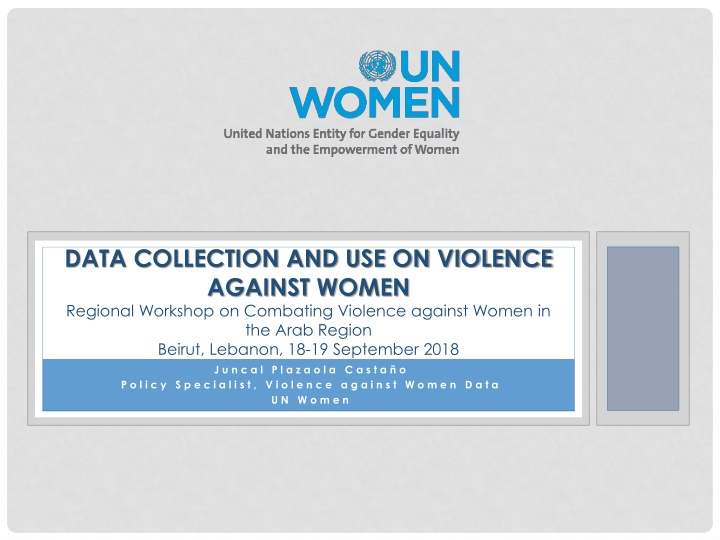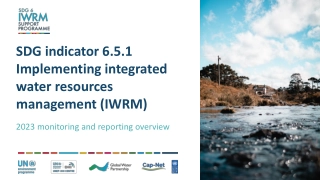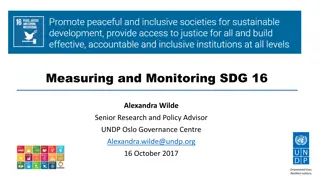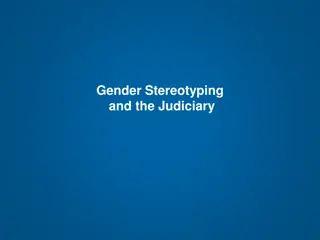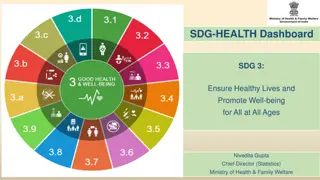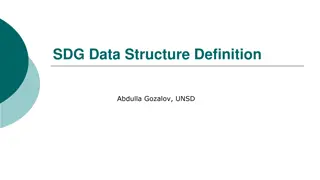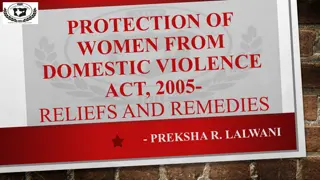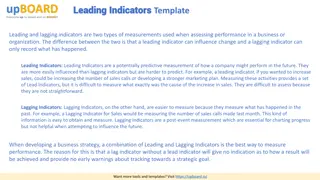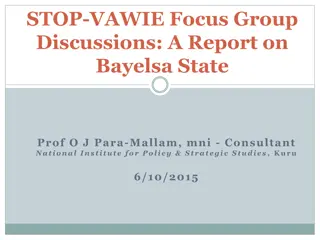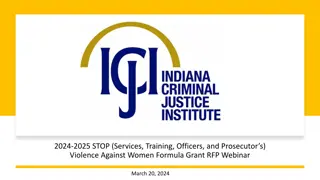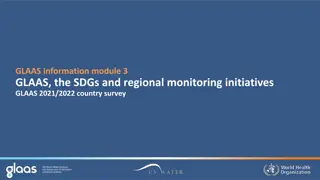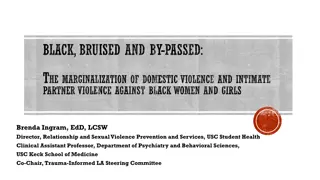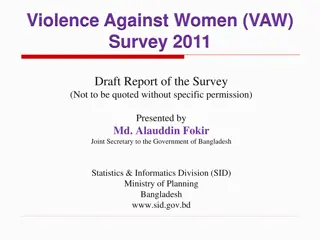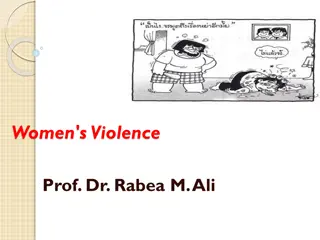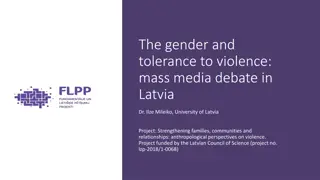Data Collection on Violence against Women: Global Indicators and SDG Progress
Unveil the crucial insights from the regional workshop in Beirut, focusing on combating violence against women. Explore global indicators such as proportion of women subjected to violence, prevalence of female genital mutilation, legal frameworks promoting gender equality, and more. Understand the significance of data collection in addressing violence against women and tracking progress towards Sustainable Development Goals.
Download Presentation

Please find below an Image/Link to download the presentation.
The content on the website is provided AS IS for your information and personal use only. It may not be sold, licensed, or shared on other websites without obtaining consent from the author.If you encounter any issues during the download, it is possible that the publisher has removed the file from their server.
You are allowed to download the files provided on this website for personal or commercial use, subject to the condition that they are used lawfully. All files are the property of their respective owners.
The content on the website is provided AS IS for your information and personal use only. It may not be sold, licensed, or shared on other websites without obtaining consent from the author.
E N D
Presentation Transcript
DATA COLLECTION AND USE ON VIOLENCE AGAINST WOMEN Regional Workshop on Combating Violence against Women in the Arab Region Beirut, Lebanon, 18-19 September 2018 J u n c a l P l a z a o l a C a s t a o P o l i c y S p e c i a l i s t , V i o l e n c e a g a i n s t W o m e n D a t a U N W o m e n
PRESENTATION Global Indicators on Violence against Women Sources of Data Global Initiatives Supporting VAW Data Collection
GLOBAL INDICATORS THE MINIMUM SET OF GENDER INDICATORS (2013) 48- Proportion of ever-partnered women (aged 15-49) subjected to physical and/or sexual violence by a current or former intimate partner, in the last 12 months 49- Proportion of women (aged 15-49) subjected to sexual violence by persons other than an intimate partner, since age 15 50- Prevalence of female genital mutilation/cutting (for relevant countries only) 51- Percentage of women aged 20-24 years old who were married or in union before age 18 8- Whether or not reservation to article 16 of CEDAW 9- Existence of laws on domestic violence 11- Legal minimum age at marriage, by sex
GLOBAL INDICATORS- THE SDG INDICATORS (2017) Leave no one behind Human rights based
GLOBAL INDICATORS- THE SDG INDICATORS (2017) Indicator 5.1.1: Whether or not legal frameworks are in place to promote, enforce, and monitor equality and non- discrimination on the basis of sex Indicator 5.2.1: Proportion of ever partnered women and girls aged 15 years and older subjected to physical, sexual, or psychological violence by a current or former intimate partner in the previous 12 months by form of violence and age Indicator 5.2.2: Proportion of women and girls aged 15 years and older subjected to sexual violence by persons other than an intimate partner in the previous 12 months, by age and place of occurrence Indicator 5.3.1: Proportion of women aged 20-24 years who were married or in a union before age 15 and before age 18 Indicator 5.3.2: Proportion of girls and women aged 15-49 years who have undergone female genital mutilation/cutting, by age - not relevant to all countries
GLOBAL INDICATORS- THE SDG INDICATORS (2017) Indicator 11.7.2: Proportion of persons victims of physical or sexual harassment by sex, age, disability status and place of occurrence, in the previous 12 months
GLOBAL INDICATORS- THE SDG INDICATORS (2017) Indicator 16.1.1: Number of victims of intentional homicides per 100,000 population, by sex and age Indicator 16.1.3: Proportion of population subjected to physical, psychological, or sexual violence in the previous 12 months Indicator 16.2.2: Number of victims of human trafficking per 100,000 population by sex, age, and forms of exploitation Indicator 16.2.3: Proportion of young women and men age 18-29 years who experienced sexual violence by age 18 years Indicator 16.3.1: Proportion of victims of violence in the previous 12 months who reported their victimization to competent authorities or other officially recognized conflict resolution mechanisms CHALLENGES FOR SDGs REPORTING Data availability Data quality/reliability Comparability- regional and global aggregates
SOURCES OF DATA Prevalence surveys Interviewing a representative sample of women using a well-designed questionnaire by trained interviewers. They provide prevalence data = proportion of women who experience violence. If well-designed and conducted, they can provide reliable data on the magnitude of the problem in the general population. They can provide data on consequences, risk and protective factors and also help- seeking behaviours. They can inform policy, service provision and prevention strategies.
SOURCES OF DATA Administrative data Data from police records, court files, health information systems, social welfare, helplines, shelters, education, child protection, services provided by NGOs, etc. They provide information on incidents reported to these services (number, patterns, etc.); response provided by these services; information about referral mechanisms, etc. They do not provide the extent and patterns of VAW in the population. They represent the point of the iceberg. They are not representative of the population. They can help monitor and inform these sectors /agencies practices.
SOURCES OF DATA Global standards and guidelines exist for the administration of prevalence surveys, including ethical and safety standards*.
SOURCES OF DATA These do not exist for the establishment and management of administrative data systems.
SOURCES OF DATA Qualitative studies Costing studies Studies on attitudes, beliefs and behaviours related to gender equality
GLOBAL INITIATIVES Flagship Programme Initiative Making Every Woman and Girl Count UN Women/WHO Global Joint Programme on VAW Data Global Center of Excellence on Gender Statistics Global Joint Programme on Essential Services for Women and Girls Subject to Violence ASEAN Regional Guidelines on VAWG Data Collection and Use Planned work on administrative data
THANK YOU j.plazaolacastano@unwomen.org
